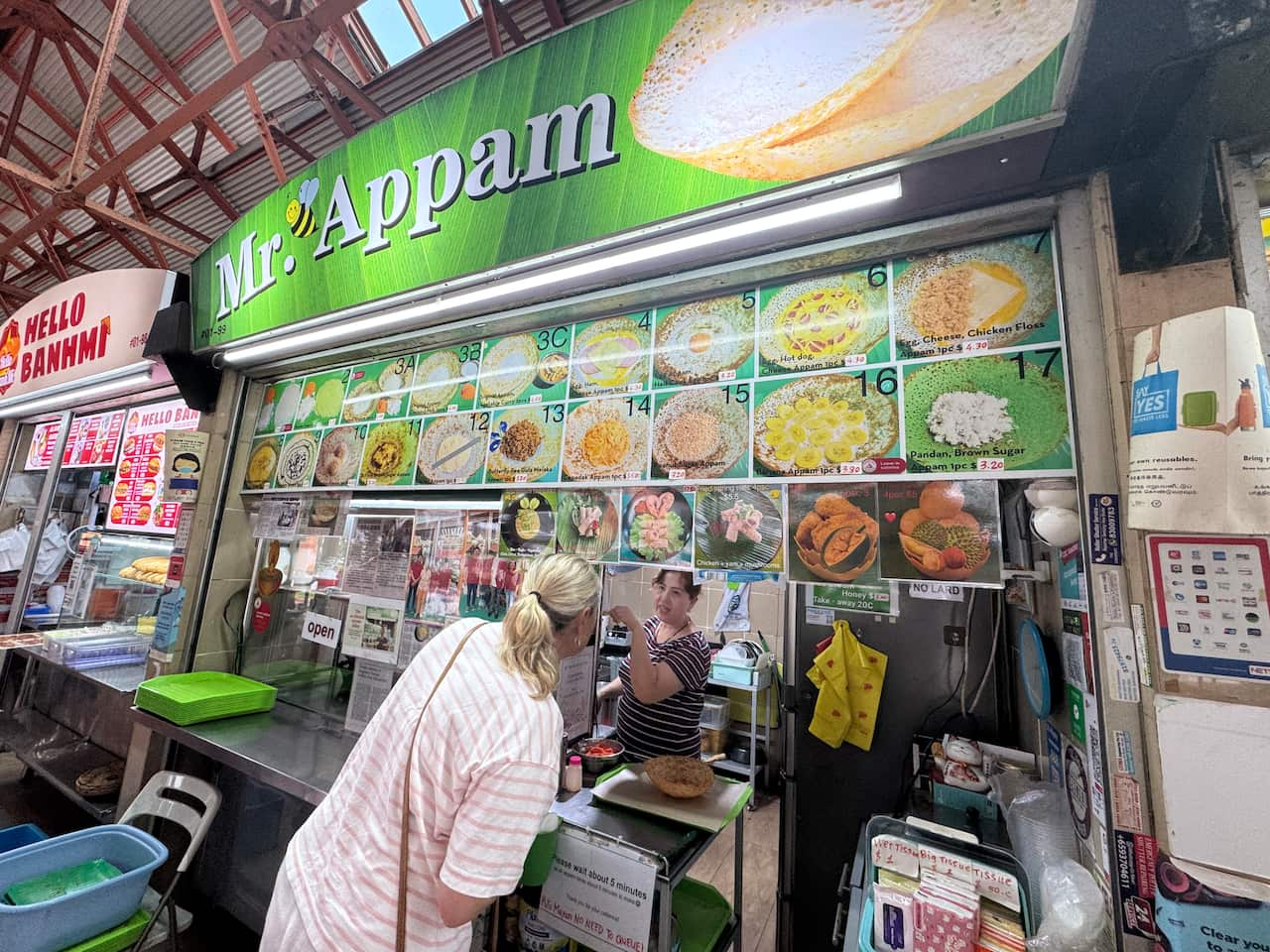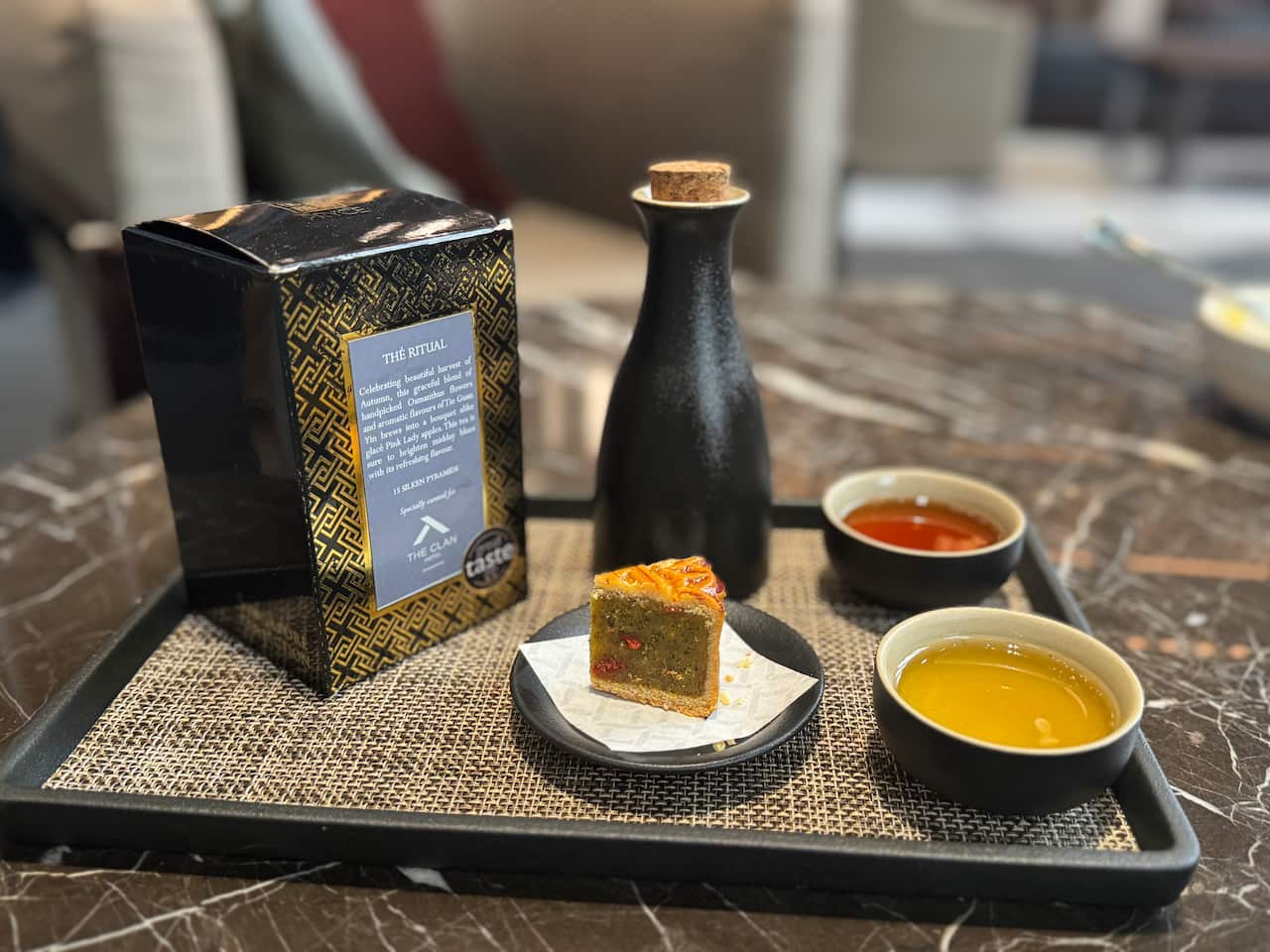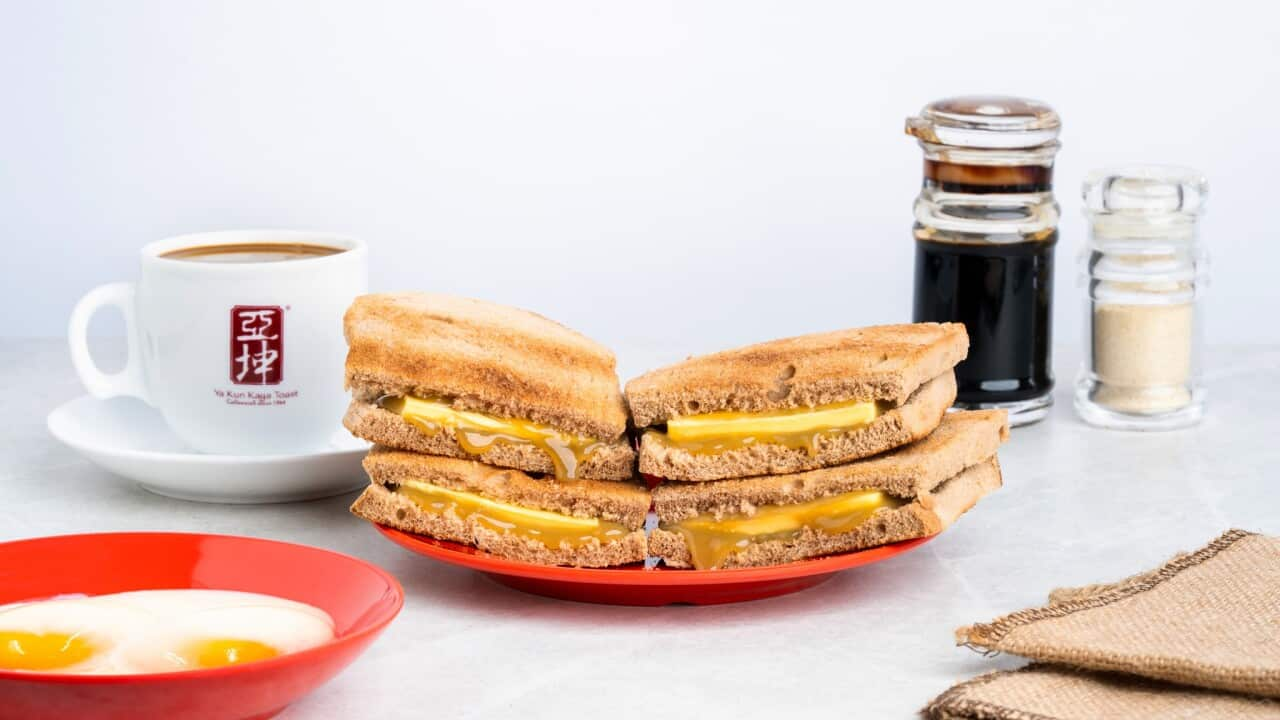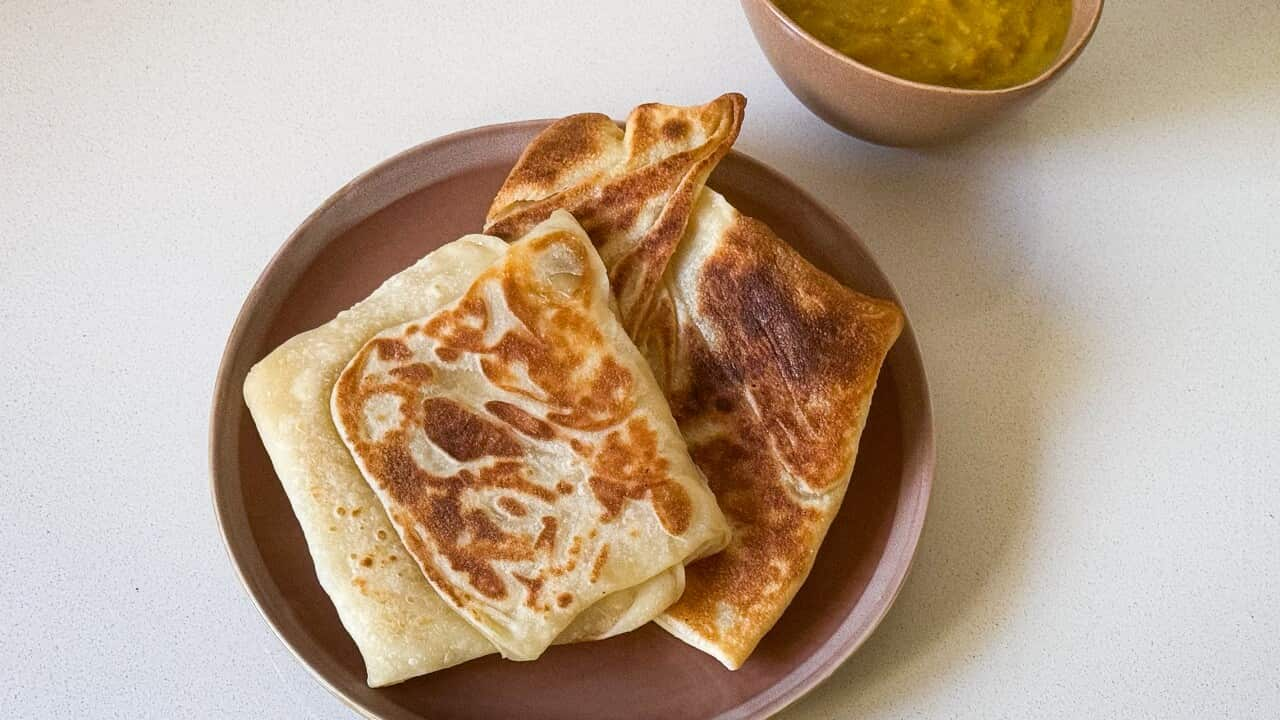Stepping out of AMOY Hotel, a boutique property tucked in the heart of Singapore’s Far East Square, feels like stepping through a portal. The hotel is part heritage museum, part urban hideaway, a living tribute to the Zhangzhou settlers who arrived from China centuries ago. Its entrance, the Fuk Tak Chi Museum, was once a temple built in 1824 for early Chinese migrants to give thanks for safe passage. From here, surrounded by shophouses and sizzling hawker stalls, I begin my three-culture breakfast crawl, a journey through the flavours, migration stories, and everyday rituals that shaped Singapore’s morning table.
Stop 1: Hainanese kaya toast & kopi, the comfort of cross-culture
Just a short stroll from AMOY, the nostalgic scent of caramelised bread leads me to Ya Kun Kaya Toast. This kopitiam (traditional coffee shop) chain has been fuelling Singaporeans since the 1940s, and its Far East Square outlet still hums with old-world charm, marble tables, sepia photos, and the metallic hiss of kettles pouring kopi (local coffee).
Here, I order the classic: kaya toast with soft-boiled eggs. The kaya (rich coconut and egg jam) melts into a pat of butter between thinly sliced, toasted bread. The eggs are wobbly perfection, dressed with soy sauce and a shake of white pepper. To drink, a steaming cup of kopi siew dai, black coffee with less condensed milk, pulls this breakfast into Singapore’s cultural melting pot.
As Emily Yeo and Yeo Min, founders of the Museum of Food, Singapore, explain: “Kaya itself is a meeting of worlds, the Malay serikaya jam on white bread baked by Hainanese cooks who learned in British kitchens.”
It’s this quiet hybridity, recipes evolving through trade, labour, and friendship, that gives Singapore’s breakfast table its soul.
Stop 2: Indian appam & roti prata, the migrant morning
A ten-minute stroll takes me into the swirl of Maxwell Food Centre, one of Singapore’s most famous hawker halls. At stall #01-05, Mr Appam is already doing a brisk morning trade. Vietnamese-born owner Nguyen Thi Kieu Hanh flips the delicate, lacy pancakes from her griddle, their centres soft and spongy, their edges crisp as lace.

Mr. Appam's famous hoppers, Maxwell Food Court, Singapore.
Traditionally from South India and Sri Lanka, appam is made from a fermented rice and lentil batter, often served with sambar (a spiced lentil stew) or coconut chutney. At Mr Appam, the dish has evolved with local creativity, pandan appam with grated coconut, or a “princess appam” topped with egg, cheese, even coconut ice cream.
I tear into one, scooping up chutney with my hands, the tangy sambar cutting through the sweetness. Around me, tables fill with every imaginable mix, locals of all backgrounds sharing everything from kaya toast to prata, nasi lemak to appam. It strikes me how breakfast in Singapore isn’t bound by culture or routine; it’s a communal ritual, a chance to catch up, connect, and quite literally taste a bit of everything.
Further along, at Hajmeer Kwaja Muslim Food, I spot roti prata frying golden, another Indian-Muslim favourite that has crossed cultures. This is Singapore’s beauty: breakfast as a social equaliser, where lineage dissolves into shared appetite.
“Our migrant history has created a diverse menu and a diverse palate,” says Emily. “Food like roti prata, nasi lemak, or kopi, they’re all reminders of how cultures blend and evolve naturally here.”
Stop 3: Malay Nasi Lemak, The Indigenous Soul
At Amoy Street Food Centre, I find the Malay heart of breakfast. The air is fragrant with coconut and sambal as queues form at Spicy Wife Nasi Lemak (#02-119). Each plate is a still life of coconut rice, sambal, crispy anchovies, peanuts, cucumber, and egg, sometimes with fried chicken or otah (spiced fish cake) on the side.

Nasi lemak
Though often considered Malaysia’s national dish, nasi lemak is every bit Singaporean in spirit. It straddles Malay, Peranakan, and even Chinese hawker identities and, like much of Singapore’s food, it tells a story of exchange rather than ownership.
“Nasi lemak is traditionally Malay, and it’s important to acknowledge that,” says Emily. “But as early as the 1940s, Chinese hawkers were already selling Malay dishes. Our love for food crosses cultures, it’s part of our shared heritage.”
With a crisp curry puff from J2 Famous (#01-21) to finish, I’m officially full of food, and of admiration for a country that makes breakfast feel like a history lesson you can eat.
The Return: Tea, Tradition, and The Clan
As the morning heat builds, I wander back toward The Clan Hotel, one of Singapore’s sleekest new boutique stays, a modern homage to the same spirit of kinship that once defined early Chinese clans. Within its minimalist lobby, tea master Kris performs a Chinese tea ceremony with the grace of a lifetime’s worth of practice. He pours oolong into tiny cups, offers a mooncake, and smiles.

Chinese Tea Ceremony
“In the old days,” he tells me, “this was how we welcomed guests, before rice or a meal, always tea. It was our way of saying, you are home.”
And in that small ritual, the steam, the sharing and quiet generosity, I find the perfect close to Singapore’s three-culture breakfast trail. Because whether it’s kaya toast at dawn, appam at mid-morning, or nasi lemak before noon, every plate here carries the same message: Singapore’s story begins, and keeps returning, to the table.
Share
SBS Food is a 24/7 foodie channel for all Australians, with a focus on simple, authentic and everyday food inspiration from cultures everywhere. NSW stream only. Read more about SBS Food
Have a story or comment? Contact Us




